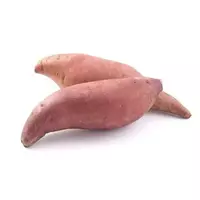Yam

According to some scientists, the name of this product came from the name of the ancient Greek healer Dioscorides, therefore, yams, being a generalized name for a plant with a thin ribbed stem and tuberous roots, belongs to the dioscorean family. According to ancient legend, Dioscoris was called a slender and flexible girl as a liana, who had the healing power to heal ailments.
Yams are currently grown in tropical and subtropical climates in countries such as Africa, Oceania, Latin America and Asia. The largest areas occupied by yams are located in Ghana, Cameroon and Nigeria, where the yield of this root crop sometimes reaches ten tons per hectare.
Meanwhile, each country has its own varieties of yams: in China - Chinese, Korean and Japanese yams, in Africa - white and yellow yams, and in Asia - bulbous, winged and edible yams.
The structure of the plant, in particular the yam root system, is quite interesting: it is very branched and is represented by a large number of lateral shoots, at the ends of which there are thickenings. These thickenings are the commercial part of the yam - tubers, which in length can reach two meters with a weight of 50 kg. These huge roots are distinguished by a rounded-elongated or fusiform shape and smooth thin bark from white to purple. When cut, light flesh of a pale yellow shade can be found.
Large tubers, which contain large amounts of protein and starch, may not deteriorate even at hot temperatures and have high nutritional value. They are not consumed fresh, but are used in a similar way to potato tubers: fried, boiled, baked or stewed. But most often, yams are cut into small cubes, dried and ground into flour, on the basis of which fresh cakes and a variety of sauces are prepared that can give a savory taste to many dishes. That is why in many African countries yams are the main food. It is like bread for Russian peasants in ancient times.
Since ancient times, the roots of yams have also been used for medicinal purposes. This is due to the ability of the plant to lower blood cholesterol, while expanding the peripheral vessels, strengthening their walls. Accordingly, regular eating of yams improves blood counts, prevents the formation of atherosclerotic plaques, and can significantly lower blood pressure.
Today, dietary supplements are created on the basis of yams. For the first time, these dietary supplements appeared in America, where they began to be used as an auxiliary in the fight against rheumatoid arthritis, gout and intestinal colic. Currently, in Russia and Ukraine, such dietary supplements can be seen in free sale.
yams 118 kCal
Energy value of yam (Ratio of proteins, fats, carbohydrates - ju):
Proteins: 1.53 g (~ 6 kCal)
Fats: 0.17 g (~ 2 kCal)
Carbohydrates: 23.78 g (~ 95 kCal)
Energy ratio (bj | y): 5% | 1% | 81%
 Español
Español Français
Français Português
Português Русский
Русский 简体中文
简体中文 繁體中文
繁體中文 日本語
日本語 한국어
한국어 العربية
العربية Türkçe
Türkçe Қазақ
Қазақ Deutsch
Deutsch Italiano
Italiano Українська
Українська
